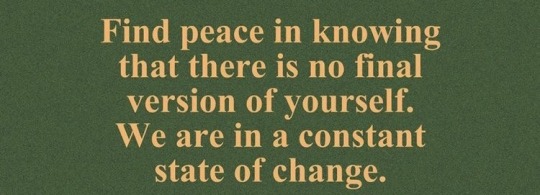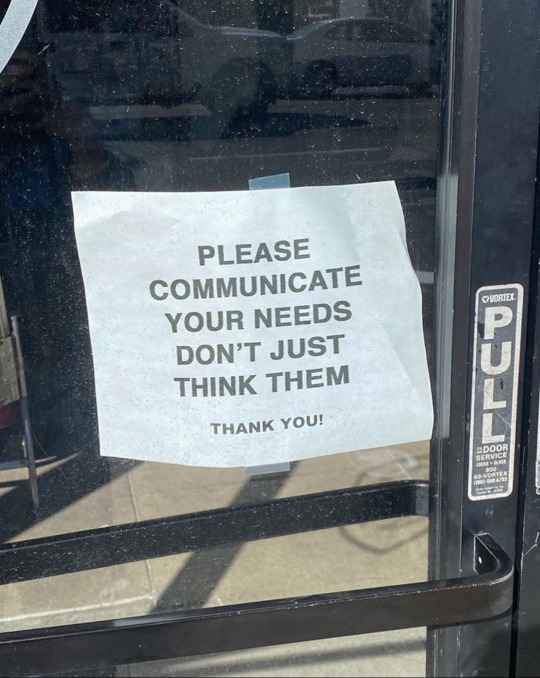Text
More than just a Audio Tech
So far, I have talked about life as an audio technician and the science of how really sounds works, but there are so many pieces left that can define what an audio tech really is and what they do. Now, I want to explore the different career paths that a technician can take because every job and person are not the same. There are many things to learn when coming into the entertainment industry on the technical side of A/V. For me, I knew I wanted to pursue the audio route more than anything, but I didn’t know a lot about what that could look like after hitting certain points of experience. I believe that these paths and titles are defined by two things, the type of event and the task being handled. Audio has many specialized positions that a technician can decide to pursue, but I am going to over the most common ones I have seen so far in the industry. The foundational positions that are reached after being a stagehand are an A1 and an A2. There are also times when you will see an A3, A4 and so on, for very large productions. The lower the number the more responsibility and authority you have over the decision making for the audio setup. We will start at the very top with an A1. The A1 is the head of an audio operation that plans the setup, delegates tasks, troubleshoots, and communicates directly with the Technical Director of a show. Anything that goes right or wrong will typically fall solely upon their shoulders. Their main physical task is to program and operate the mixer while coordinating a majority of the physical setup of systems and cable runs to the next in charge, the A2. The A2 follows the wants of the A1 by correctly running all signal and power lines, patching inputs and outputs, setting out the speakers, dressing cable, etc. The A2 gets much of the physical labor, but they can make or break the efficiency of an audio setup, so in many cases they need to be even more organized and flexible than the A1. As we move outside of an A1 and A2 we find our more specialized positions. There are multiple areas within an audio setup that when they become intricate enough, it is better to dedicate a single tech to the sole task of maintaining that system. The most common specialized positions are known as a RF Coordinator and Communications Engineer. I added them both because they are closely related and always need to be on the same page to avoid disastrous error. An RF coordinator is someone who plans out all the frequencies that will be used for, specifically for wireless communications, during the time of a show. This may sound like an easy task but when you have a widespread communication system that involves networking it is essential to avoid interference and poor signal strength. It is more than hearing a random radio station overtake your conversation with a stage manager, but it could be something more serious like a microphone failure while trying to communicate a serious emergency. The communications engineer oversees the set-up up all comm systems for a show. Every critical crew member gets something called a belt pack with a headset microphone that is customized to their preferences on who they want to hear and speak to. Each belt pack takes over a frequency once it is turned on and that is where the RF coordinator comes in to keep track of the frequencies and assign them to specific areas. Moving outside of communications we can go into systems engineers. A system engineer does the physical setup of an A2, but takes it many steps further by continuing to optimize and maintain the audio systems by specifically looking at how speakers are rigged in the air, power is distributed across them, and fixing acoustic issues in the venue space. They are there to make sure the physical system is put in its place, at the proper level of power and signal distribution to achieve peak sonic coverage. The last position we will look at is a Monitor Tech. These kinds of techs are typically hired for events with live bands when the performers will be hearing themselves on monitors. The tech is responsible for adjusting the levels on the mixer that each member of the band wants to hear themselves at. They also must control the level of In-ear-monitors which are typically worn by a singer. This is a critical job because many bands are specific about their sound so they can perform to the best of their abilities. As you can see there are many paths to be taken when starting as an audio technician and each with their own importance. There are many more out there and if you are ever interested in the industry there are plenty of resources to help get you involved.
7 notes
·
View notes
Text
How Does Sound Work
Hello again! I am back this week to follow up on my previous post by going more in depth on how audio works and is transduced. I will use a common example of audio flow that involves five moving parts. The example is a person who will be speaking into a mic, sending the mic signal into a mixer, which then goes out of a speaker, and finally into our listeners ears. Let us start at the very beginning from where sound is generated, otherwise commonly known as, the source. The most common audio sources are a person, laptop, phone, and/or an instrument. The source in our example is a person who is giving a presentation. Generating a voice is done by utilizing multiple parts of the body simultaneously so let us talk about exactly how that is done. Inside your throat is the larynx (voice box) which has vocal cords/folds sitting at the very top, closest to your mouth. As you exhale, the diaphragm pushes against your lungs forcing air up and out past the vocal cords with increasing pressure. When the pressure is high enough it causes the cords to move closely together and begin to vibrate. With a narrow opening left between the vocal cords, air escapes to project your voice out of your mouth. When we generate our voice, it is known as acoustic/mechanical energy. So now that we generated our voice, what happens next?The vibrations from our voice vibrate the surrounding air particles causing them to bump into each other creating a large domino effect. This forms the mechanical energy sound wave through which sound moves. The sound wave will now move into the next part of our chain, a microphone. The microphones job is to receive the different energies from a source and convert them into electrical energy. Similar, to how we have a diaphragm that aids in taking air in and out our lungs, a microphone has one too. A microphone’s diaphragm begins to vibrate as pressure from incoming sound waves begin to hit it. This diaphragm is attached to a conductive coil which moves in unison with the diaphragm. Around the coil, there are permanent magnets that the coil oscillates inside of without touching. As the coil moves inside the magnetic field, it starts producing a voltage. The direction that the coil moves from its original point is accounted as a positive or negative voltage that produces an alternating current of electrical energy. These unique waves of electrical energy are routed out of the microphone, down a XLR cable and into our mixer. Many times, people have seen a mixer in a club, concert, or even tv shows. They are the heart of an entire audio operation as they control every audio signal coming in and going out. The mixer itself has a plethora of abilities, but only two functions encompass its entire purpose. These are adjusting the incoming audio signals and sending them to the correct destinations. Mixers on their own take years to comprehend as they are the engine that drives sound so, I will spare the details and go over the basics that get our signal into the next piece of our chain. The audio signal from the mic is now sent through an XLR cable and into an input port of our mixer. Our mixer receives that signal through a designated channel and the audio engineer needs to adjust it before sending it back out. The main component that is always adjusted first is the gain. Gain refers to the amplification or loudness of an input signal. If the signal coming in is too low then we increase the gain, if it is too high then we decrease it. Once your gain is properly set the engineer will balance other aspects of the signal through EQ, compression, effects, etc. This is the artistic part of audio that becomes more subjective. It is also a big reason it takes so much time to understand how a mixer works. When the engineer finishes shaping the sound, we can increase the volume of the input channel (the microphone) and lastly the master volume which includes all input signals. This audio signal is then sent out, down another XLR cable and into our speaker. A speaker works exactly like a microphone, but instead of converting mechanical energy to electrical energy it does the opposite. The signal we sent from the mixer to our speaker was in the form of electrical energy. In a speaker there is a coil and permanent magnet, just like our microphone. As the electric current is sent into the coil of the speaker it begins to interact and influence the magnetic field in which it is placed. As electrical charges move back and forth so does the coil of the speaker. However, instead of being attached to a diaphragm like our microphone, the speaker coil is linked to a cone which move the two pieces in unison. As the cone begins to move it pushes the air back and forth with increasing pressure thus producing and replicating the original mechanical sound waves from the presenter. The soundwaves then push themselves into the other air particles and out into a space for us to hear. After all this signal generation, conversion, and processing we still must rely on our listeners to receive and process the sound that was made. The soundwaves in the air will enter our ears to travel down the ear canal and vibrate our eardrum. The waves move into the middle ear where the tiniest bones in our body, the ossicles, amplify the sound and push the soundwaves into our inner ear. The sound waves at last meet and vibrate the fluid within our cochlea triggering about 25,000 nerve endings. The nerves translate the vibrations into electrical impulses that travel along our auditory nerve and finally into our brain.
As you can tell it takes many pathways and pieces for just a presenter to get an audience to hear them with a simple microphone and some speakers. Even the way our bodies generate, and process sound alone takes a variety of moving parts. However, the main thing to remember is that sound only requires three necessities, a source, a medium, and a receiver.
I hope from my example you could grasp a better understanding on the details of how sound travels through basic audio equipment and how we ourselves generate and receive it.
Thank you!
0 notes
Text
Being in Live Events
Hello Everyone,
It has been quite a while since I have used this space, but I am here for educational purposes. I have been assigned to create some content specific to me and my work within the entertainment industry. There hasn’t been a time where I have really shared what it is that I do on this platform, but today is going to be that day. For this post I am going the educational route rather than entertaining, however there might be some of the latter in the future. Anyways, lets begin todays topic, being an audio tech. I am currently in the middle of building my career within the entertainment technology industry as an audio show technician. Now what does that mean? Well, it could be several things depending on what you like about certain aspects of audio in live events. For a general scope of responsibilities an audio technician is someone who has designs, calibrates, implements, programs, and maintains all pieces of audio equipment for a show. Again, I know how general that statement sounds, however it really depends on the person when it comes to their niche area, and these are just the guidelines of what they should have at least the basic knowledge of. So, when you think of audio for a show what comes to mind? Maybe speakers, a microphone, instruments, a mixer, sometimes a DJ? These are all correctly identified pieces of the audio puzzle that a technician must put together and take apart, time, and time again. However, this is what the consumer line of audio looks like. There is a large world beyond that of a recording studio or household use to consider. When you go to large concerts or festivals do you ever up look up in the air and/or at the sides of the stage and notice a large stack of speakers facing the audience? Do you ever wonder what it takes to get them that high in the air? Or even how the sound gets from the band into those speakers? These may seem like easy questions at first, but they are questions that take months of planning to properly answer, and part of my job is being able to provide different answers depending on the scenario. There is a lot of critical thinking, troubleshooting and creative solutions that go into this job, but it is extremely rewarding when you can do things correctly and see the work you just put in right before your eyes. I recently worked a show here in Orlando, FL, called the Grace Hopper Celebration. It is a large convention that celebrates women in STEM which lasted almost a week. I was lucky enough to be helping the audio team build the main stage audio systems which taught me a lot about the workflow of others and collaborating with different teams like video and LED to achieve our goals. I also learned how frustrating some things can be when there are opposing forces that you can’t change or the only thing you can do is wait for them to be gone in order to move forward with your own task. If anyone here is in entertainment, then you will understand how critical soft skills are to our industry. They can make or break your relationships, job opportunities and overall career. At the end of the day, it is better to be as flexible and transparent as possible with any situation so that everyone can move forward more fluidly. The point I am trying to make though, is that no matter how many obstacles we ran into at that show I learned something every single moment and would not trade the experience for anything. I realized things I was good at, slightly scared of, and not so great at. At the end of the day, it was all a learning experience that I will use going forward in my career every time I am on another show. Luckily all that hard work wasn’t for nothing either, because when everything was finally put up it looked spectacular, and I got to be a part of it. Here’s a little picture of what some of it looked like from the catwalk view if you’re interested. This is just a little bit of the reward that you will receive in this industry if you go a similar route that I did. If you stuck around, thanks for reading all the way until the end. :)

0 notes
Text
no matter what happened today, you:
are loved
deserve to eat
are needed & valued
should take care of yourself
have a future
will be okay
114K notes
·
View notes


















